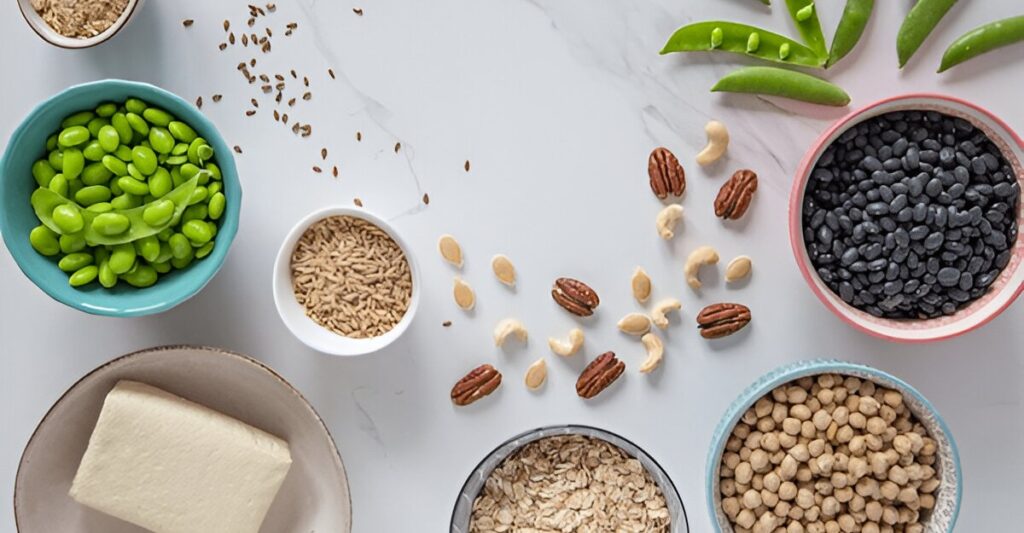Nutrient timing for body composition is a strategic approach to eating that focuses on when you consume specific nutrients to maximize muscle growth, fat loss, and overall physical performance. By aligning your meals and macronutrients—carbohydrates, proteins, and fats—with your body’s needs and activity levels, you can enhance your fitness results. This article dives into the science of nutrient timing, offering actionable tips to help you achieve your body composition goals.
What Is Nutrient Timing?
Nutrient timing refers to the deliberate scheduling of food intake to optimize physiological responses like muscle repair, energy replenishment, and fat metabolism. Rather than just focusing on what you eat, nutrient timing emphasizes when you eat to support your body’s metabolic processes. For those aiming to improve body composition—building muscle while minimizing fat—nutrient timing is a game-changer.
This approach is particularly effective for athletes, fitness enthusiasts, and anyone looking to sculpt their physique. By understanding how your body processes nutrients at different times, you can make informed choices to fuel performance and recovery.
Why Nutrient Timing Matters for Body Composition
Your body’s response to nutrients varies throughout the day, influenced by factors like exercise, circadian rhythms, and hormonal fluctuations. Nutrient timing for body composition leverages these biological rhythms to:
- Maximize Muscle Protein Synthesis: Consuming protein after resistance training stimulates muscle repair and growth.
- Optimize Energy Use: Carbohydrates consumed around workouts replenish glycogen stores, fueling performance and recovery.
- Enhance Fat Burning: Timing fats and carbs strategically can prevent excess storage and promote fat oxidation.
Research shows that aligning nutrient intake with physical activity enhances body composition outcomes compared to random eating patterns. Let’s explore how to apply nutrient timing effectively.
Key Phases of Nutrient Timing
Nutrient timing can be broken down into three critical phases: pre-workout, intra-workout, and post-workout. Each phase plays a unique role in supporting your body composition goals.
1. Pre-Workout Nutrition (1-3 Hours Before Exercise)
The goal of pre-workout nutrition is to fuel your body for optimal performance. A balanced meal with carbohydrates and protein primes your muscles and boosts energy.
- Carbohydrates: Provide readily available energy to power through workouts. Opt for complex carbs like oats, sweet potatoes, or whole-grain bread.
- Protein: Supports muscle preservation and prepares your body for post-workout recovery. Examples include chicken, Greek yogurt, or a whey protein shake.
- Fats: Keep fats moderate, as they digest slowly. A small amount of healthy fats (e.g., avocado or nuts) is fine but avoid heavy, fatty meals.
Example Pre-Workout Meal: A turkey and quinoa wrap with a side of fruit, consumed 2 hours before training.
2. Intra-Workout Nutrition (During Exercise)
For workouts lasting over an hour, intra-workout nutrition can sustain energy and reduce muscle breakdown. This phase is most relevant for endurance athletes or those engaging in intense, prolonged sessions.
- Carbohydrates: Fast-digesting carbs like sports drinks or gels maintain glycogen levels.
- Electrolytes: Replenish sodium and potassium lost through sweat to prevent cramps and fatigue.
Tip: For shorter workouts (under 60 minutes), water is usually sufficient. Reserve intra-workout nutrition for longer sessions.
3. Post-Workout Nutrition (Within 30-60 Minutes After Exercise)
The post-workout window is critical for recovery and body composition. Your muscles are primed to absorb nutrients, making this the ideal time to refuel.
- Protein: Stimulates muscle protein synthesis to repair and build muscle. Aim for 20-40 grams of high-quality protein, such as eggs, salmon, or a protein shake.
- Carbohydrates: Replenish glycogen stores depleted during exercise. Fast-digesting carbs like white rice, bananas, or potatoes work well.
- Fats: Keep fats low in this window, as they can slow nutrient absorption.
Example Post-Workout Meal: A smoothie with whey protein, a banana, and oats, consumed within 45 minutes of training.
Nutrient Timing Beyond Workouts
While workout-related timing is crucial, nutrient timing for body composition extends to your daily eating schedule. Here are additional strategies to optimize your diet:
- Spread Protein Intake: Distribute protein evenly across 3-5 meals to maximize muscle protein synthesis throughout the day. Aim for 0.7-1 gram of protein per pound of body weight daily.
- Time Carbohydrates Wisely: Consume most of your carbs around workouts or in the morning when insulin sensitivity is higher. This minimizes fat storage and supports energy needs.
- Evening Meals: Focus on protein and vegetables at night to promote satiety and muscle repair during sleep. Limit heavy carbs late in the day unless you train in the evening.
Common Myths About Nutrient Timing
Despite its benefits, nutrient timing is surrounded by myths that can confuse beginners. Let’s debunk a few:
- Myth 1: You Must Eat Immediately After a Workout
While the post-workout window is important, the “anabolic window” isn’t as narrow as once thought. Consuming nutrients within 1-2 hours post-exercise is sufficient for most people. - Myth 2: Nutrient Timing Is Only for Bodybuilders
Anyone aiming to improve body composition—whether for aesthetics, health, or performance—can benefit from nutrient timing. - Myth 3: It’s Too Complicated
Nutrient timing doesn’t have to be complex. Start with simple adjustments, like eating protein post-workout, and build from there.
Practical Tips for Implementing Nutrient Timing
Ready to apply nutrient timing for body composition? Here are actionable steps to get started:
- Plan Your Meals: Schedule meals around your workouts to align with pre- and post-workout windows. Use apps like MyFitnessPal to track timing and macros.
- Prioritize Protein: Ensure every meal contains a quality protein source to support muscle maintenance and growth.
- Adjust for Your Schedule: If you train early or late, tweak your meal timing to fit your lifestyle while prioritizing workout nutrition.
- Stay Consistent: Consistency is key. Nutrient timing works best when paired with a balanced diet and regular exercise.
- Listen to Your Body: Experiment with timing and adjust based on how your body feels and performs.
The Science Behind Nutrient Timing
Studies support the efficacy of nutrient timing for body composition. A 2013 study in the Journal of the International Society of Sports Nutrition found that consuming protein and carbs post-workout significantly increased muscle protein synthesis compared to delayed intake. Similarly, research in Sports Medicine highlights that carbohydrate timing around exercise enhances glycogen replenishment, improving performance in subsequent sessions.
By leveraging these findings, you can fine-tune your diet to align with your body’s biological processes, leading to better muscle growth and fat loss.
Conclusion
Nutrient timing for body composition is a powerful tool to elevate your fitness journey. By strategically timing your intake of protein, carbohydrates, and fats, you can optimize muscle growth, enhance recovery, and minimize fat gain. Whether you’re a seasoned athlete or a fitness beginner, incorporating nutrient timing into your routine can yield noticeable results.
Start small by focusing on pre- and post-workout nutrition, then expand to daily meal timing. With consistency and a science-backed approach, you’ll be well on your way to achieving your body composition goals.
Call to Action: Ready to transform your physique? Experiment with nutrient timing today and share your progress in the comments below!


